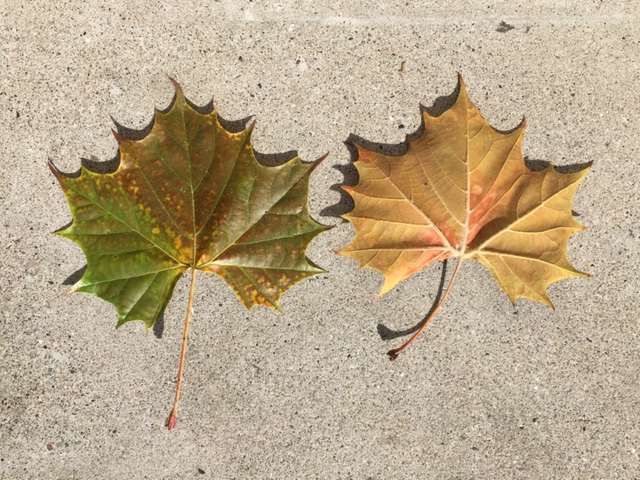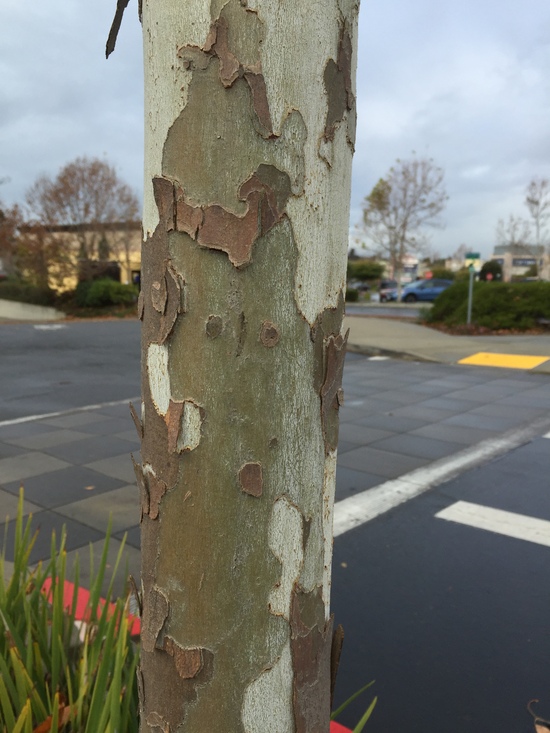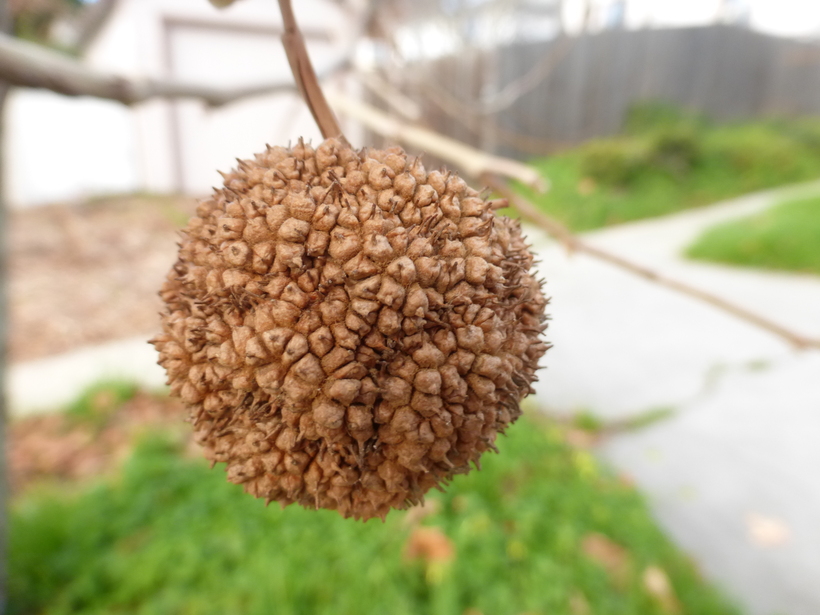American Sycamore
Platanus occidentalis L.
Description
American sycamore is the largest hardwood tree of North America reaching 140 ft tall¹. The bark is light brown, but it exfoliates exposing spots of white, green or yellow inner bark, giving the trees a distinctive appearance. The leaves are large (4 – 10 inches) and palmately lobed and veined. The leaf is fuzzy underneath, has several large teeth and has a swollen petiole base that encircles the lateral bud. The separate male and female flowers are on the same plant (monoecious). The female flowers are in round heads that give rise to the characteristic fruiting balls, usually with one ball per peduncle. Fruits may disintegrate on the tree or fall to the ground where the break apart. Sycamore is in the plane tree family (Platanaceae).

Leaves of American sycamore. @ Z. Akulova, 2016. CalPhotos²

Bark of American sycamore. @ Z. Akulova, 2015. CalPhotos³

Fruit of American sycamore. @ Z. Akulova, 2017. CalPhotos4
Distribution
Sycamore grows in all the states east of the Great Plains except Minnesota¹. It is common in bottom lands along streams and rivers, but will also invade abandoned farmland in the middle portions of its range. It tolerates wet soil conditions¹. Sycamore is found in every county in Maryland5.

Native distribution of American sycamore. USDA¹
Wildlife importance
Winter seeds are consumed by various songbirds including Purple Finch, Slate-colored Junco, American Goldfinch and Carolina Chickadee6. It is host to numerous wood boring insects and leafhoppers6 .
Economic importance
American sycamore is tolerant to atmospheric pollution, which has led to its use as a street tree. It susceptibility to anthracnose, however, has led its replacement with the London plane tree (a hybrid between American sycamore and the Eurasian sycamore, Platanus orientalis). Sycamore’s hard wood is used for butcher blocks.
Threats
Sycamores are affected by numerous diseases and insects, but one of the most damaging is anthracnose, which results in die back of stems and in some cases tree death.
Interesting Facts
- A sycamore in Dickerson Conservation Park, Montgomery County, is Maryland’s largest tree. It measures 138 ft tall and 98.7 inches in diameter as measured in 20127.
- American sycamore is a host to eastern mistletoe, but it does not cause extensive damage to the tree¹.
- Sycamore derives its common name from the British who thought it resembled a maple (Acer pseudoplatanoides) from Europe called a “sycamore”. Hence the sycamore is named after a maple that has a scientific name describing its resemblance to our sycamore8 ! The two genera are unrelated.
- The London plane tree, a hybrid of American sycamore, is frequently planted as a street tree. One distinction is the plane tree has two fruit balls per peduncle rather than one. Its bark also peels to the base of the tree rather than on the younger trunks and branches6.
References
- USDA-Forest Service Silvics, Volume 2 Hardwoods: Platanus occidentalis
- Cal Photos, Berkeley
- Cal Photos, Berkeley
- Cal Photos, Berkeley
- Maryland Biodiversity Project: American sycamore
- Illinois Wildflowers: American sycamore
- Maryland Big Trees
- Missouri Botanical Gardens: Platanus occidentalis
Contributed by J. Hull
